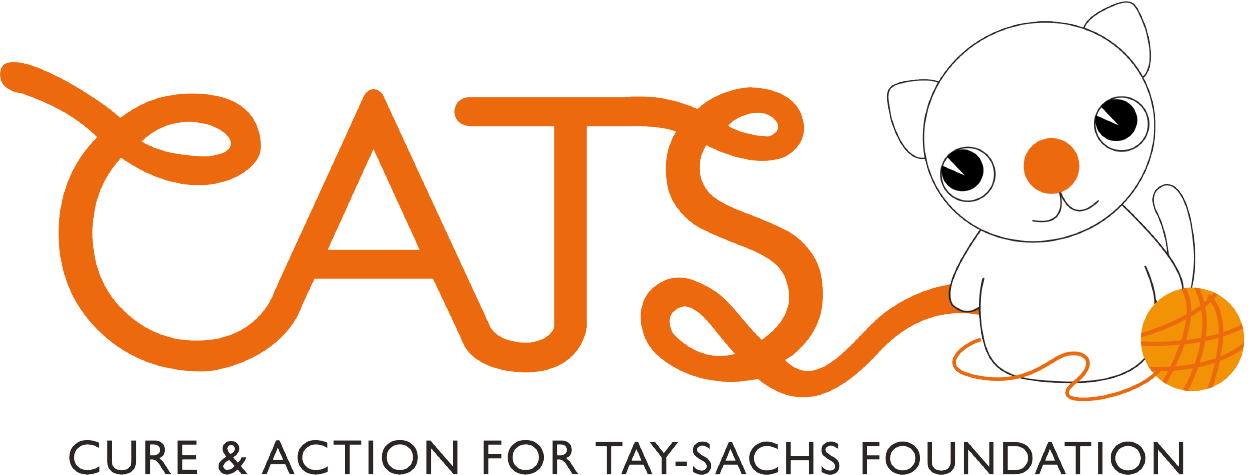
Research into Tay-Sachs – November 2011 Update
We are fortunate to have direct access to the main research team into Tay-Sachs who are based in England. They have agreed to provide us with regular updates so that we can provide an up-to-date progress report of their work into finding an effective treatment for Tay-Sachs.
These updates will enable us at THE CATS FOUNDATION to show everyone that their donations are going directly to the fight against Tay-Sachs.
Together with the research team we have put together an overview of their work up until now. This will allow people see the amazing work they have been doing, what is planned for the future and how the THE CATS FOUNDATION will be involved.
Please get in touch with us using the contact us form or the comment box below with any questions.
Background to the research
The laboratory group in the University of Cambridge Department of Medicine has been working on a programme to treat Tay-Sachs and other related devastating neurological diseases for the last 14 years.
First indications of a breakthrough were in the use of gene therapy, which is a way of correcting the inherited abnormality that causes these devastating diseases. Gene therapy has been pioneered in a few members of the lysosomal storage disease (LSD) class of diseases in an experimental model where the condition occurs either spontaneously or as a result of genetic modification.
The breakthrough in treatment for Tay-Sachs
Five years ago Dr Begoña Cachón and colleagues, working in the Cox laboratory in Cambridge, published spectacular results on the successful use of gene therapy.
It was found that when mice with authentically modelled Tay-Sachs and the related Sandhoff disease (both are part of the GM2 gangliosidosis family) were administered a single treatment in early adult life there was an increased survival rate. In addition, these amazing results showed that the treatment prevented the onset of the devastating neurological disease that mimics the acute illness occurring in babies and young children.
Further work in the laboratory has perfected this approach, and long-term cures or near-cures are the rule. Many years of hard work has paid off and the results seem to be by far the most gratifying of any so far published in diseases of this type affecting the brain.
Tay-Sachs Gene Therapy Consortium – bringing the specialists together
Contact was made with a group in Alabama who were studying a spontaneous model in cats which showed similarly shortened lifespan as those seen in mice. Initial experiments carried out with Dr Doug Martin proved very promising and now, some years on, a consortium has been founded.
This consortium includes Dr Cachón and Professor Cox with American investigators, and was supported initially by the Tay-Sachs Foundation and Allied Diseases Association. Funds from the Cameron and Hayden Lord Foundation and The Cure Tay-Sachs Foundation were also provided to develop a pre-clinical programme of work with the idea of starting a clinical trial in patients with the disease.
A great amount of work has gone into this, and we now know that there is a spectacular therapeutic result in the large brain of a cat, and also promising results in an established model of the disease.
The scene is set, beyond much regulatory work, to advance to a clinical trial of gene therapy in affected human patients within the next two years or so.
Using gene therapy as a treatment
The Cox team is committed to developing gene therapy based on the long-term record of research. The team is urgently seeking appropriate funds to secure a clinical grade vector which is used to deliver the corrective gene to brain tissue in those affected by Tay-Sachs and other similar LSDs.
A senior neurosurgeon is part of this collaboration in the UK, and funds are needed to:
- meet the costs of a high-grade vector for human use
- the procedure itself
- the conduct of the trial
- applications for regulatory approval (an intensely complex process)
The final clinical grade vector for British and European patients will need to be tested in the Cambridge laboratory. A Clinical Trials Manager will also need to be appointed to cope with a mountain of regulatory and approval work for the procedure and clinical trial in patients.
THE CATS FOUNDATION and the Cox team link up
Professor Cox tells us that he feels that strong support from a British Tay-Sachs and related diseases charity, like THE CATS FOUNDATION, will be critically important to direct the attention of major funding bodies.
By doing this we will be able to get as much exposure to the Medical Research Council so that the needs of patients with Tay-Sachs, Sandhoff disease and the numerous other lysosomal diseases that so cruelly attack the brains of babies, children, and adults of all ages can be addressed.
Gene therapy so far looks to be the most promising for this group of disorders. Undoubtedly the successful conduct of a trial for this relentless condition would have immense effects across the whole field – as well as other neurodegenerative diseases that affect children more generally.
Funds from THE CATS FOUNDATION would be used to support experiments on human clinical vectors. Additional funds will be requested to recruit a Clinical Trials Manager for the regulatory proposals.
At a later date combined funding will be needed from Government, charitable and other sources to meet the cost of the clinical trial.
The Cambridge group remains in active collaboration with the Tay-Sachs Gene Therapy Consortium and a close eye is being kept on the potential for appropriate vector development from any source that could be used for clinical trials – and given the need, at the earliest possible opportunity.



